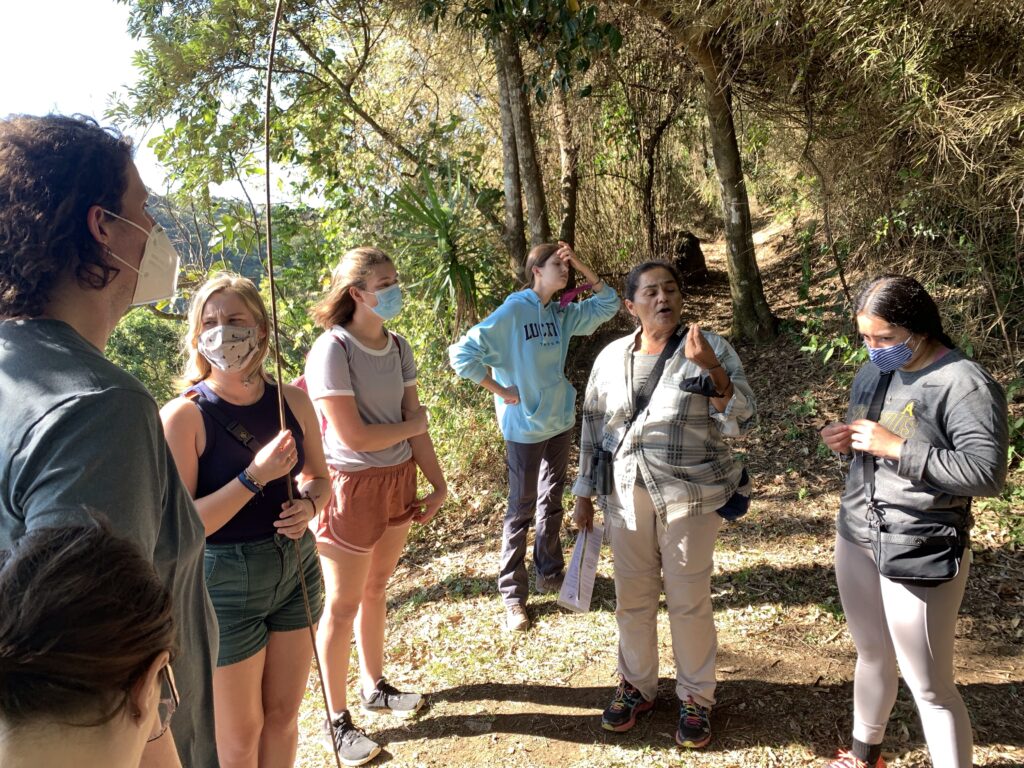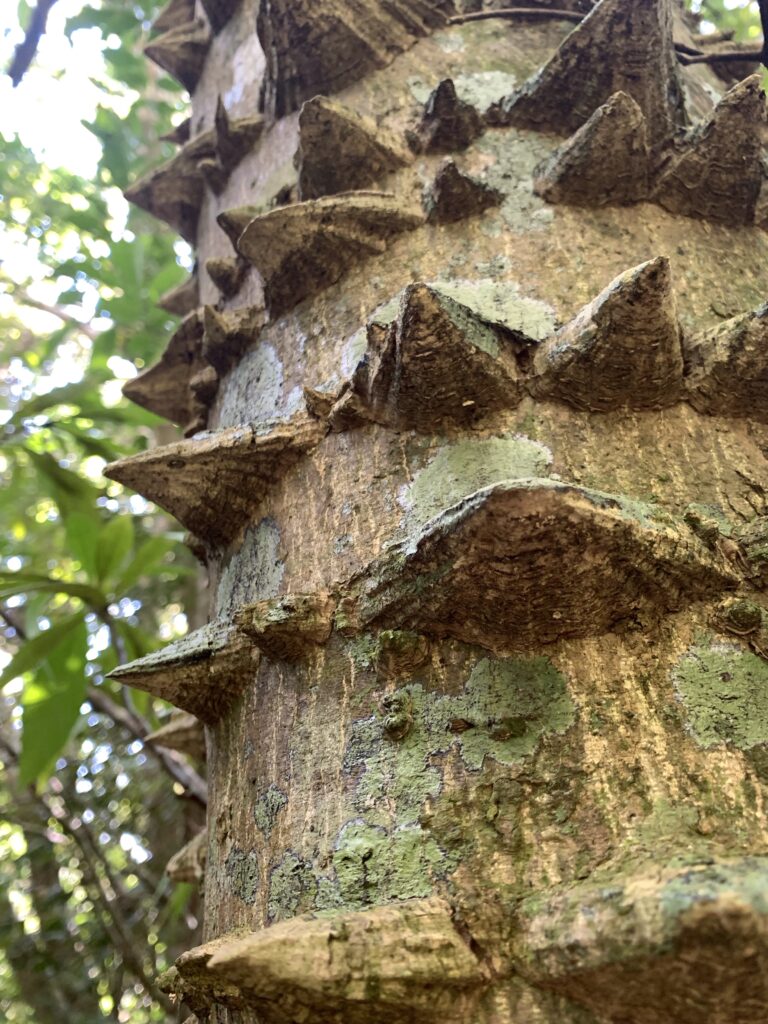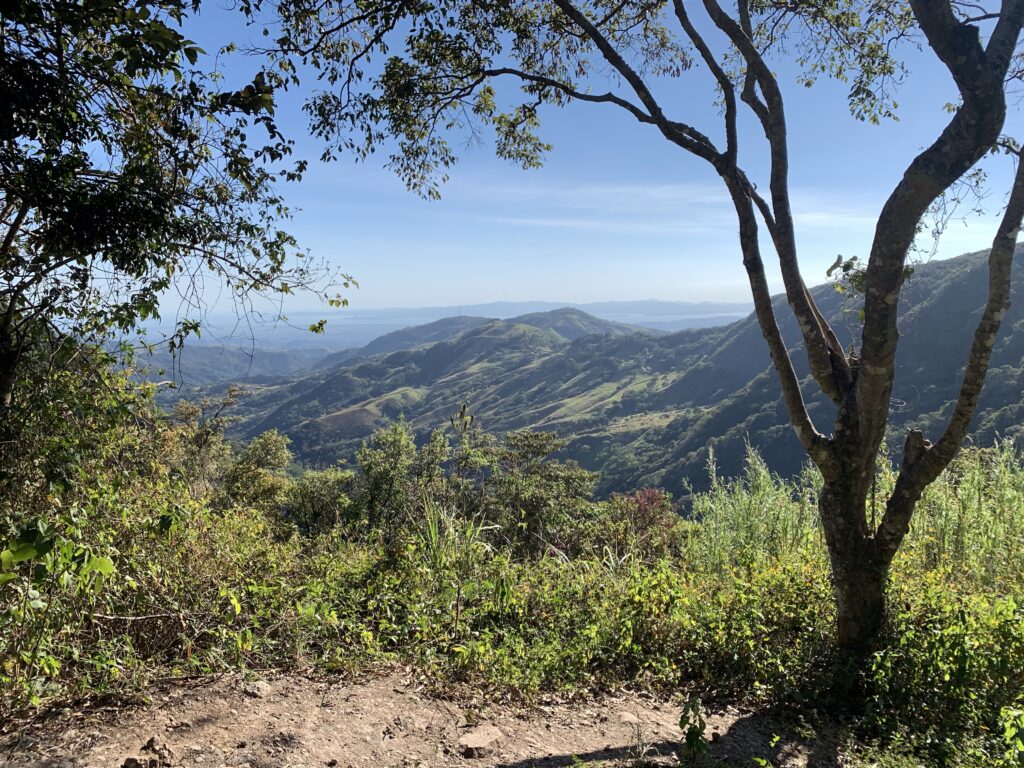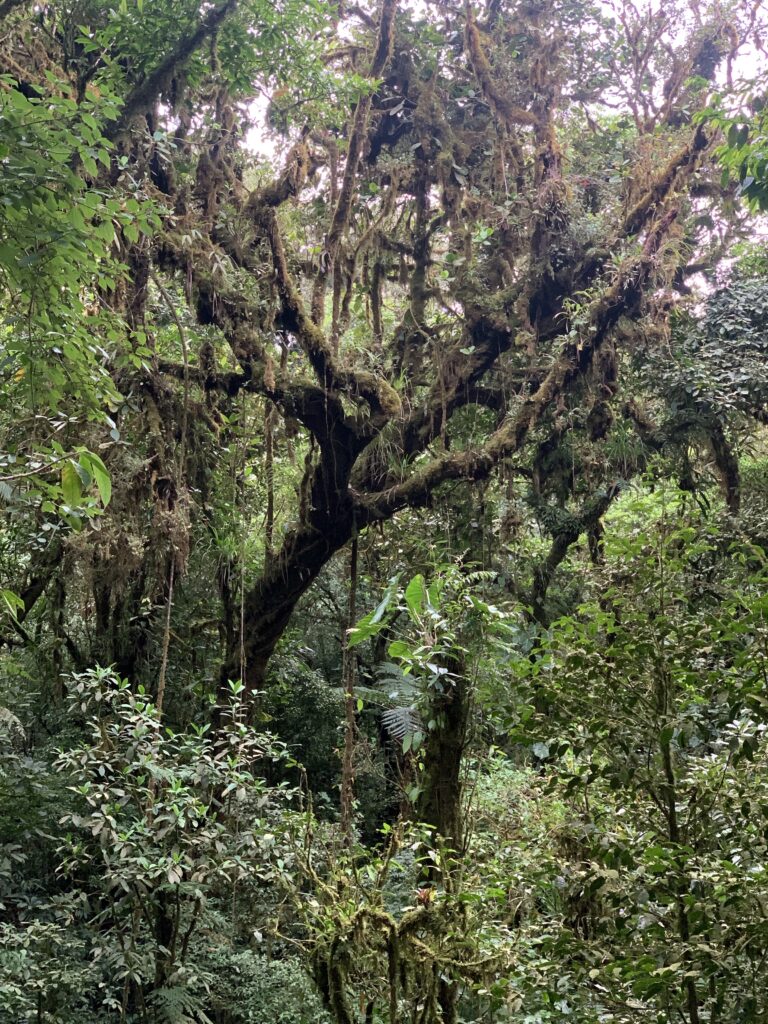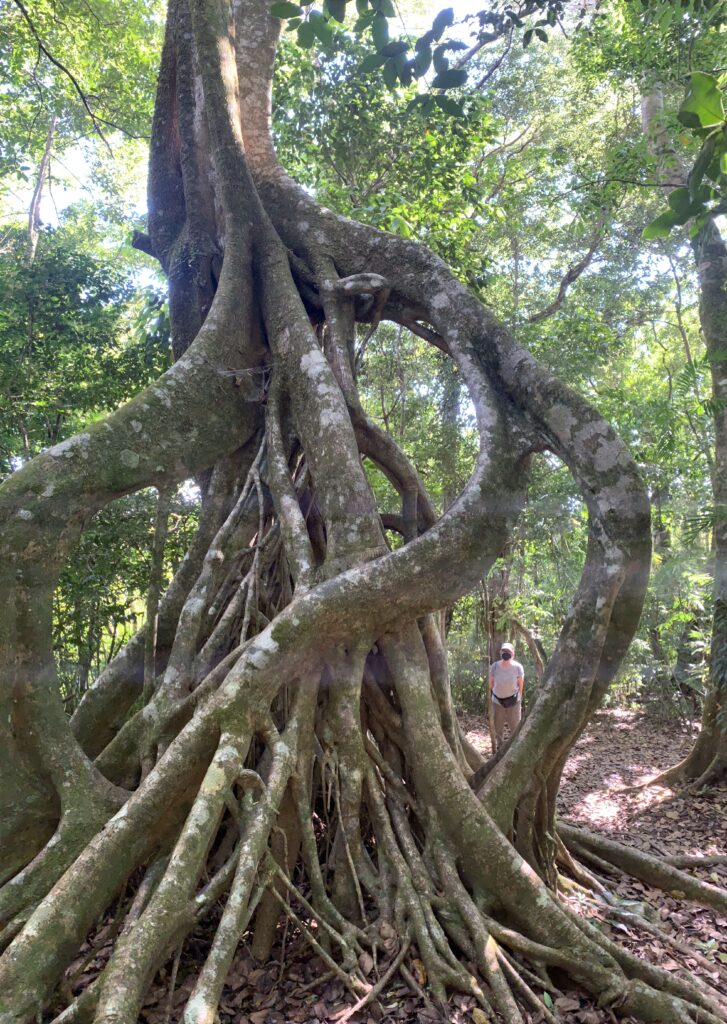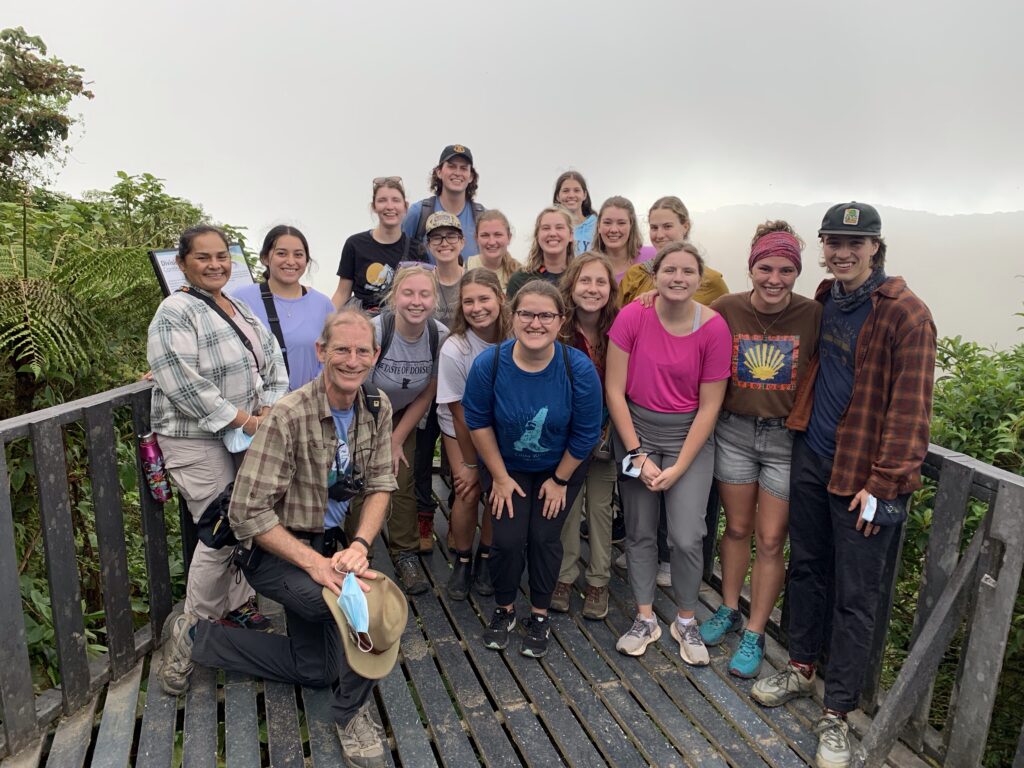22-01-21 Monteverde
Our guide, Raquel, says the difference between rain forest and cloud forest is the elevation. Of course, wrapped up in that one variable are a lot of effects. Orogenous rainfall (that caused by air masses being pushed up a mountainside, expanding, cooling, and dropping its water) is one. But something even more fundamental about mountains is that they have a top beyond which plants and animals can’t go. As the climate changes and lower elevations warm and dry, some species can move higher up, but only until they reach the top of the mountain. Thus mountains, and the super diverse cloud forests, are an important harbinger of climate change. We’ve heard from multiple people here, for example, about how much warmer and drier it’s been in the last 10 years than it has been in the past. (We’ve also heard multiple times about the extinction of the golden toad, once common in the cloud forests of Monteverde, but that just disappeared one year.) As temperature and rainfall patterns change, some species here are likely to be stressed.
We’ve experienced the cloud forest at lower levels on the drier Pacific slope, up higher where our hotel sits, and this afternoon up in the Monteverde Cloud Forest Preserve that straddles the ridge dividing the Pacific from the Caribbean sides. Up on top the clouds whipped by us, the forest was lush and damp, and the world was covered by epiphytes (plants, such as orchids and bromeliads, that grow on trees). Here are some photos.
